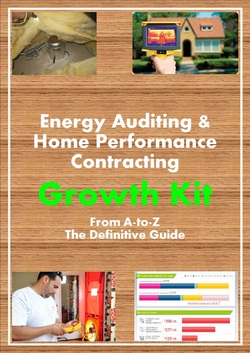Passing the BPI Exam With Energy Auditor Training
FREE BPI PRACTICE EXAMPUT YOUR HOME PERFORMANCE BUSINESS ON ROCKET FUELENERGY AUDITOR NEWSLETTERGet the only Energy Auditor Marketing Newsletter with monthly strategies and tactics to grow your home performance business.
The main topics of the BPI BA exam are listed out below. Click on a link that interests you, or you need some brushing up on to learn more on each subject.
1. Building Science Fundamentals 1a. Basic terms and definitions 1b. Principals of energy, air & moisture 1c. Combustion science 2. Buildings and Their Systems 2a. Building components 2b. Conservation strategies 2c. Comprehensive building assessment process 2d. Design considerations 3. Measurement and Verification of Building Performance 3a. Applied diagnostics and troubleshooting 4. BPI National Standards and Project Specifications 4a. Comprehensive building assessment 5. Analyzing Buildings Systems 5a. Comprehensive building assessment 5b. Appliances and lighting 6. Conduct and communications 6a. Conservation strategies |
BPI Written Exam - Section 2 Buildings and Their Systems
"Build it tight and ventilate it right," the building science saying goes. Which means, today, we want to build homes as tight as possible, and then add controlled mechanical ventilation. We want to ventilate a home to give occupants enough fresh (outside) air to stay healthy, remove odors, dilute indoor pollutants and lower indoor relative humidity. Remember the old way to think about home ventilation was that a leaky home breathes, which is true, but counting air leakage as ventilation is bad because that air could be really polluted coming from the crawlspace or attics or completely unconditioned. There are 4 ways to add mechanical ventilation explained in Section 1.18.
Mechanical ventilation can be in several different forms:
This ASHRAE Standard 62.2 references ventilation requirements and calculations for homes and is a BPI standard you will need to know for the BPI exam. To learn about issues involved with attic ventilation, check out Section 2.12. Next Section To 2B2a. Building Components
2b. Conservation Strategies
2c. Comprehensive Building Assessment Process
2d. Design considerations
|

